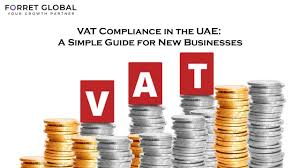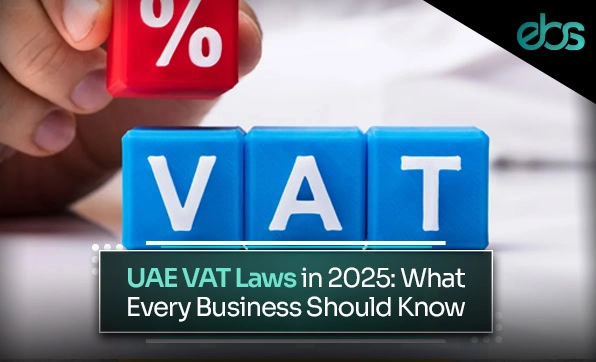Now Reading: UAE VAT Audits: Essential Tips for Powerful 2025 Compliance
-
01
UAE VAT Audits: Essential Tips for Powerful 2025 Compliance
UAE VAT Audits: Essential Tips for Powerful 2025 Compliance

Table of Contents
The Value Added Tax (VAT) regime in the UAE, implemented in 2018, has matured considerably, and with this maturity comes an increasing focus from the Federal Tax Authority (FTA) on rigorous compliance and robust auditing. As businesses move into 2025, proactive preparation for potential VAT audits is not just a best practice; it’s a strategic imperative to avoid penalties, ensure operational continuity, and maintain a healthy relationship with the tax authorities. This article outlines key compliance tips to help businesses navigate the landscape of UAE VAT audits.
Understanding the FTA’s Audit Approach

The FTA employs a risk-based approach to VAT audits. This means that certain factors can trigger an audit, including:
- Inconsistent or fluctuating VAT return submissions.
- Significant refund claims.
- Industry-specific risk profiles.
- Discrepancies identified through data analytics or third-party information.
- Failure to submit returns or make payments on time.
- Random selection, though less frequent, is also a possibility.
Businesses should assume that an audit can occur at any time and therefore maintain a state of continuous audit readiness.
Tip 1: Maintain Meticulous and Accessible Records
The cornerstone of any successful VAT audit defense is comprehensive and well-organized documentation. The FTA requires businesses to maintain all tax-related records for a minimum of five years (or fifteen years for real estate related documents). This includes, but is not limited to:
- Tax Invoices and Credit/Debit Notes: Ensure all invoices, both issued and received, comply with FTA requirements (e.g., TRN of the supplier/customer, clear VAT amount, correct date, unique serial number). Credit and debit notes must properly reflect adjustments.
- Import and Export Documentation: Customs declarations, bills of entry, and export proofs are crucial for demonstrating zero-rated supplies.
- Supplier and Customer Contracts: These provide context for transactions and their VAT treatment.
- Financial Records: General ledgers, trial balances, bank statements, and reconciliation statements are vital to support the figures reported in VAT returns.
- Fixed Asset Registers: Essential for capital assets subject to input tax recovery.
- Internal Policies and Procedures: Documented processes for VAT calculation, input tax recovery, and invoice management demonstrate internal controls.
All records should be easily retrievable, whether in physical or digital format, and capable of being presented to auditors promptly upon request.
Tip 2: Ensure Accuracy and Consistency in VAT Returns

Errors or inconsistencies in VAT returns are primary audit triggers. Businesses must dedicate significant attention to the accuracy of their submissions:
- Reconcile Output and Input Tax: Regularly reconcile the output VAT declared with sales records and input VAT claimed with purchase records. This reconciliation should extend to the general ledger.
- Verify VAT Treatment of Supplies: Confirm that all goods and services supplied are correctly categorized as standard-rated, zero-rated, or exempt. Common errors include misclassifying zero-rated exports or applying incorrect exemptions.
- Validate Input Tax Recovery: Ensure that input tax is only recovered on expenses directly related to taxable supplies and that all conditions for recovery are met (e.g., holding a valid tax invoice). Be particularly diligent with blocked input tax items, such as certain entertainment expenses.
- Check for Cross-Period Adjustments: Any adjustments from prior periods must be correctly accounted for and reported in the relevant VAT return or through a voluntary disclosure, if necessary.
- Review Disclosure of Imported Services: Ensure reverse charge mechanism for imported services is accurately applied and reported.
Regular internal reviews and robust reconciliation processes can help catch and rectify errors before they become audit issues.
Tip 3: Understand and Document Specific VAT Treatments

Certain business activities or types of transactions have specific VAT treatments that often lead to scrutiny during audits. Businesses should have clear documentation and understanding for these:
- Designated Zones: Transactions involving Designated Zones (DZ) have unique rules. Businesses must clearly differentiate between supplies made within a DZ and supplies made from a DZ to the mainland, and have documentation to support the tax treatment (e.g., customs exits/entries).
- Real Estate Transactions: The VAT treatment of real estate sales, leases, and transfers (commercial vs. residential, first supply vs. subsequent supplies) is complex. Maintain all property registration documents and sales agreements.
- Free Zone Transactions: Differentiate between Free Zones that are “Designated Zones” and those that are not. The rules for supplies to and from Free Zones differ.
- Export of Goods and Services: Ensure that all conditions for zero-rating exports are met and documented, including proof of export from the UAE. For services, confirm the recipient is outside the UAE and the service is not consumed locally.
- Intra-GCC Supplies: While VAT is not yet implemented across all GCC states, businesses must be aware of the rules for supplies made to and from other GCC countries as they evolve.
Tip 4: Be Prepared for Audit Communication and Process
When an FTA audit is initiated, knowing the process and being prepared for communication is key:
- Designate a Point of Contact: Appoint a knowledgeable individual or team (e.g., Finance Manager, Head of Tax) as the primary contact for FTA auditors.
- Understand Information Requests: Carefully review all information requests from the FTA. Seek clarification if anything is unclear.
- Respond Promptly and Concisely: Provide requested information within the stipulated deadlines. Only provide what is asked, avoiding unnecessary additional data that could raise new questions.
- Maintain Professionalism: Interact respectfully and professionally with FTA auditors. Cooperation facilitates a smoother audit process.
- Document All Interactions: Keep a log of all communications with the FTA, including dates, topics discussed, and information exchanged.
- Internal Review Before Submission: Before submitting any documents or responses to the FTA, conduct an internal review to ensure accuracy and consistency.
Tip 5: Consider Professional Assistance and Technology Solutions
Navigating VAT compliance and audit preparedness can be complex, particularly for larger organizations or those with intricate business models.
- Engage Tax Consultants: Professional tax advisors can provide invaluable assistance in reviewing existing compliance, identifying potential risks, and guiding businesses through the audit process. They can also represent the business during FTA interactions.
- Utilize VAT Compliance Software: Implementing robust VAT compliance software can automate processes, reduce manual errors, facilitate data reconciliation, and ensure that invoices and reports meet FTA specifications. This can significantly enhance audit readiness.
- Conduct Internal VAT Health Checks: Periodically engage external consultants or internal teams to perform mock VAT audits or “health checks” to identify weaknesses in compliance before the FTA does.
By prioritizing meticulous record-keeping, ensuring accuracy in submissions, understanding specific tax treatments, and being prepared for the audit process, businesses in the UAE can significantly enhance their VAT compliance posture in 2025 and beyond, transforming potential audit challenges into opportunities to demonstrate robust financial governance.
WATCH MORE: https://www.youtube.com/watch?v=jhGY6iZ1ae0
READ MORE: UAE Corporate Tax: Critical 9% Shifts for Business Growth






















